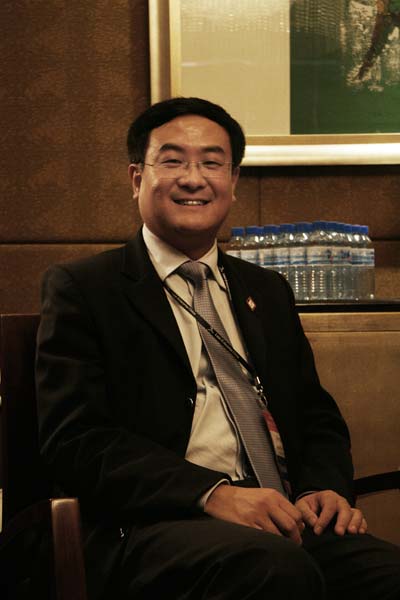PSA Ex-exec: success & challenges while sourcing in China
Mr. Armand Chen(in the picture) has been working as vice president of PSA (China), and general manager of PSA Styling, R&D, Purchasing Center (Shanghai) before the current position. And before that he was vice president and CEO of Faurecia (China). Mr. Chen has rich experience in doing global sourcing.

Gasgoo.com: Many procurement centers of the international automakers have built an engineering team in China. Are they going to help improve the local suppliers and make special designs for them?
Chen: Yes, you're right. Here I can share with you what we've done to pursue local sourcing in China.
In 2005, we set up a three-member team, comprising a project manager, an engineer and a quality auditor. The team functions to locate, secure and manage the supplier; they spent much more time in field operation than in our office. The manager could make decisions to manage the improving and training process of the supplier; the engineer has rich experience in making the target product to be procured, and he can facilitate the development of the products; the quality auditor ensures that proper inspection techniques are utilized.
The team is responsible for training only one potential supplier at first, and they could manage two or more suppliers as time goes by. And the development time of a potential supplier is shortened.
This is much better than our early move-the problems can be shot and solved earlier, and we could form a strategic alliance with the suppliers. Otherwise, it'll be too late if the auditors from the headquarters come to the plant and find that what the supplier has done cannot meet the requirement-it's a waste of all the earlier efforts.
Gasgoo.com: Had the three-man teams brought great benefits in cost-cutting?
Chen: Sure. We spent much at the beginning; we tried to improve their skills and hunted for qualified talents to construct this procurement organization. But we benefit a lot now as the purchase quantity increases, the suppliers get mature and the development time shortens. So I could tell you that the cost reduction brought by sourcing here is satisfying.
Gasgoo.com: Global sourcing or supply chain executives nowadays are complaining about doing business here. And they always missed the sourcing target, what are the reasons?
Chen: I think some of them are short of qualified talents, short of investment. However, aside from these possible restrictions, there're three other inevitable obstacles, i.e. technology infrastructure, the resistance from outside and inside the company, and the global logistics.
First, the local Chinese suppliers are not capable of turning those functional specification drafts by the OEMs into design documents or the final launch of the products. Some of them even failed to fully understand the draft; of course there are historical reasons for the local suppliers.
Second, the OEM can't get support from its contracted suppliers in the European or American markets that also have business in the local Chinese market. The big suppliers, like Delphi and Visteon, promise low-price parts only for their customers in local market, but they can't threat their European or American operations with lower price for the same products -- these products could be shipped to their European or American counterparts and then sold to the OEMs. Also as more and more know-how are controlled by those tier-one suppliers, the OEMs lack technical support giving potential suppliers indication of how to develop products. Besides all these, the internal resistance to China sourcing is another big constraint.
Last but not the least; the global logistics is a big problem. You have to calculate the cost of global logistics which comprises a large percentage of sales. It undercuts the economic advantage of global sourcing -- if the goods shipped from the low-cost country equal that sourced from the destination market in cost, then that's worthless doing global sourcing. Another challenge arises from the complexity of the logistic network. You could hardly find an excellent logistics company here. Most of them are unable to take Lean approaches. They should reduce inventories in warehouses, cut waste in cost and time, and assimilate its logistics network, as well as offer transparent information. According to my personal experience, lots of procurement projects end up with nothing due to logistics problems.
But all in all, the OEMs that aim to cut cost by global souring should strive to achieve their goals despite these challenges. It should create its own supply chain in the low-cost countries, even the local supplier it has developed possibly would supply for the competitors.
Gasgoo not only offers timely news and profound insight about China auto industry, but also help with business connection and expansion for suppliers and purchasers via multiple channels and methods. Buyer service:buyer-support@gasgoo.comSeller Service:seller-support@gasgoo.com







